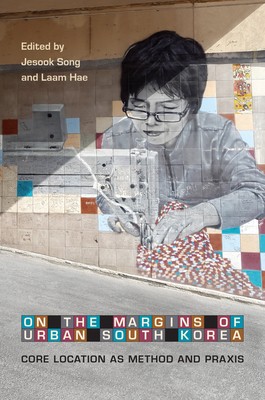
- We will send in 10–14 business days.
- Publisher: University of Toronto Press
- ISBN-10: 1487503350
- ISBN-13: 9781487503352
- Format: 15.5 x 23.1 x 2.3 cm, hardcover
- Language: English
- SAVE -10% with code: EXTRA
On the Margins of Urban South Korea (e-book) (used book) | bookbook.eu
Reviews
Description
This book provides a rich and illuminating account of the peripheries of urban, regional, and transnational development in South Korea. Engaging with the ideas of "core location," a term coined by Baik Young-seo, and "Asia as method," a concept with a century-old intellectual lineage in East Asia, each chapter in the volume discusses the ways in which a place can be studied in the increasingly globalizing world. Examining cases set in Chinatown, the Jeju English education city, rural areas of migrant wives, greenbelts, anti-poverty activist sites, places of community activism, and textile factories in Korea, each chapter develops a relational understanding of a place, in which a place is analyzed as a constellation of local and global forces and processes that interact and contradict in particular ways. Each chapter also explores multiple modes of urban marginality, and discusses how understanding them shapes the methods of academic praxis for social justice causes and decolonial scholarship. This book is the outcome of several years of interdisciplinary collaborations and dialogues among scholars based in geography, architecture, anthropology, and urban politics.
EXTRA 10 % discount with code: EXTRA
The promotion ends in 13d.12:16:01
The discount code is valid when purchasing from 10 €. Discounts do not stack.
- Publisher: University of Toronto Press
- ISBN-10: 1487503350
- ISBN-13: 9781487503352
- Format: 15.5 x 23.1 x 2.3 cm, hardcover
- Language: English English
This book provides a rich and illuminating account of the peripheries of urban, regional, and transnational development in South Korea. Engaging with the ideas of "core location," a term coined by Baik Young-seo, and "Asia as method," a concept with a century-old intellectual lineage in East Asia, each chapter in the volume discusses the ways in which a place can be studied in the increasingly globalizing world. Examining cases set in Chinatown, the Jeju English education city, rural areas of migrant wives, greenbelts, anti-poverty activist sites, places of community activism, and textile factories in Korea, each chapter develops a relational understanding of a place, in which a place is analyzed as a constellation of local and global forces and processes that interact and contradict in particular ways. Each chapter also explores multiple modes of urban marginality, and discusses how understanding them shapes the methods of academic praxis for social justice causes and decolonial scholarship. This book is the outcome of several years of interdisciplinary collaborations and dialogues among scholars based in geography, architecture, anthropology, and urban politics.


Reviews